Abstract
Xylem failure via gas embolism (cavitation) induced by water stress was investigated in the palm Rhapis excelsa (Thumb.) Henry. Xylem embolism in excised stems and petioles was detected using measurements of xylem flow resistance: a decrease in resistance after the removal of flow-impeding embolisms by a pressure treatment indicated their previous presence in the axis. Results supported the validity of the method because increased resistance in an axis corresponded with: (a) induction of embolism by dehydration, (b) increased numbers of cavitations as detected by acoustic means, (c) presence of bubbles in xylem vessels. The method was used to determine how Rhapis accommodates embolism; results suggested four ways. (a) Embolism was relatively rare because pressure potentials reach the embolism-inducing value of about −2.90 megapascals only during prolonged drought. (b) When embolism did occur in nature, it was confined to the relatively expendable leaf xylem; the stem xylem, which is critical for shoot survival, remained fully functional. (c) Even during prolonged drought, the extent of embolism is limited by complete stomatal closure, which occurred at the xylem pressure potential of −3.20 ± 0.18 megapascals. (d) Embolism is potentially reversible during prolonged rains, since embolisms dissolved within 5 h at a pressure potential of 0.00 megapascals (atmospheric), and xylem sap can approach this pressure during rain.
Full text
PDF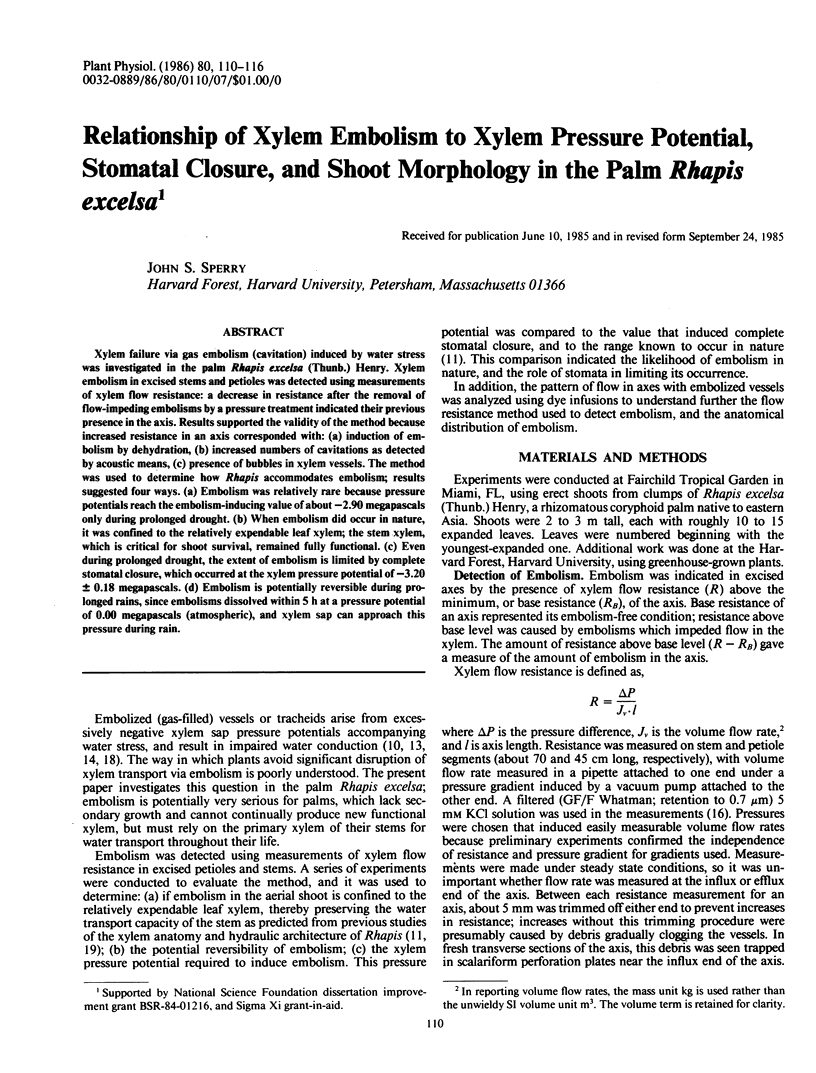
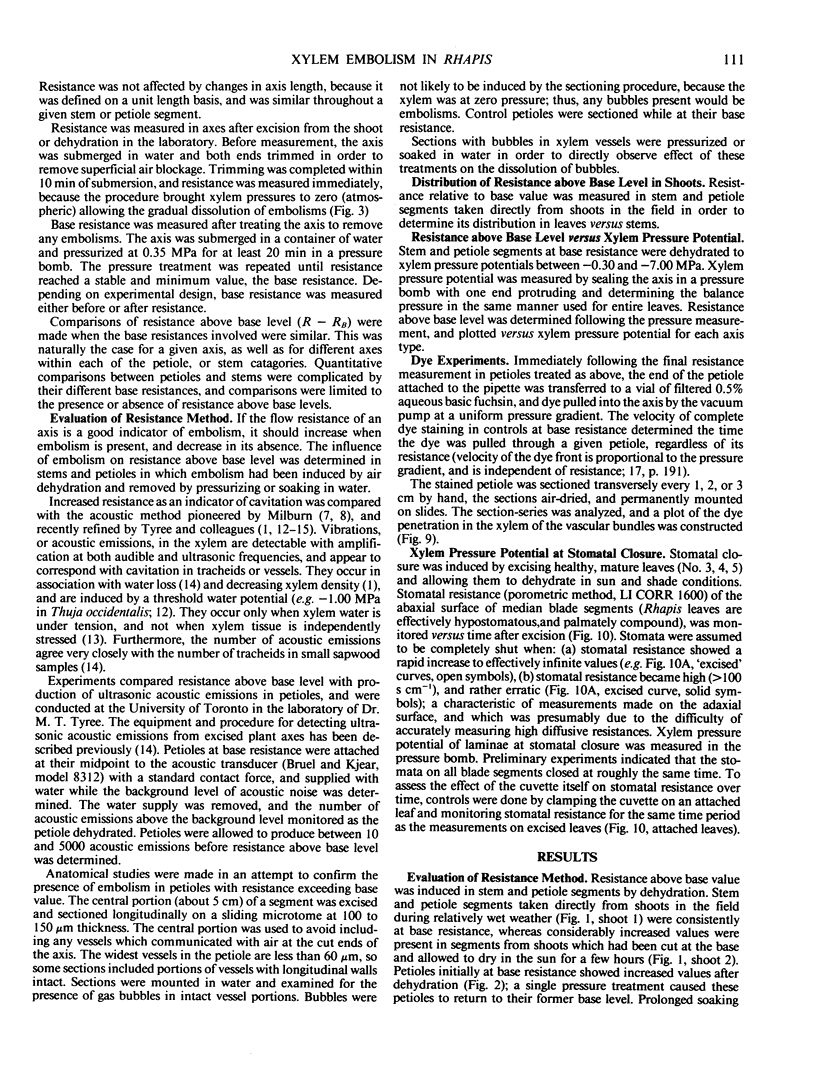
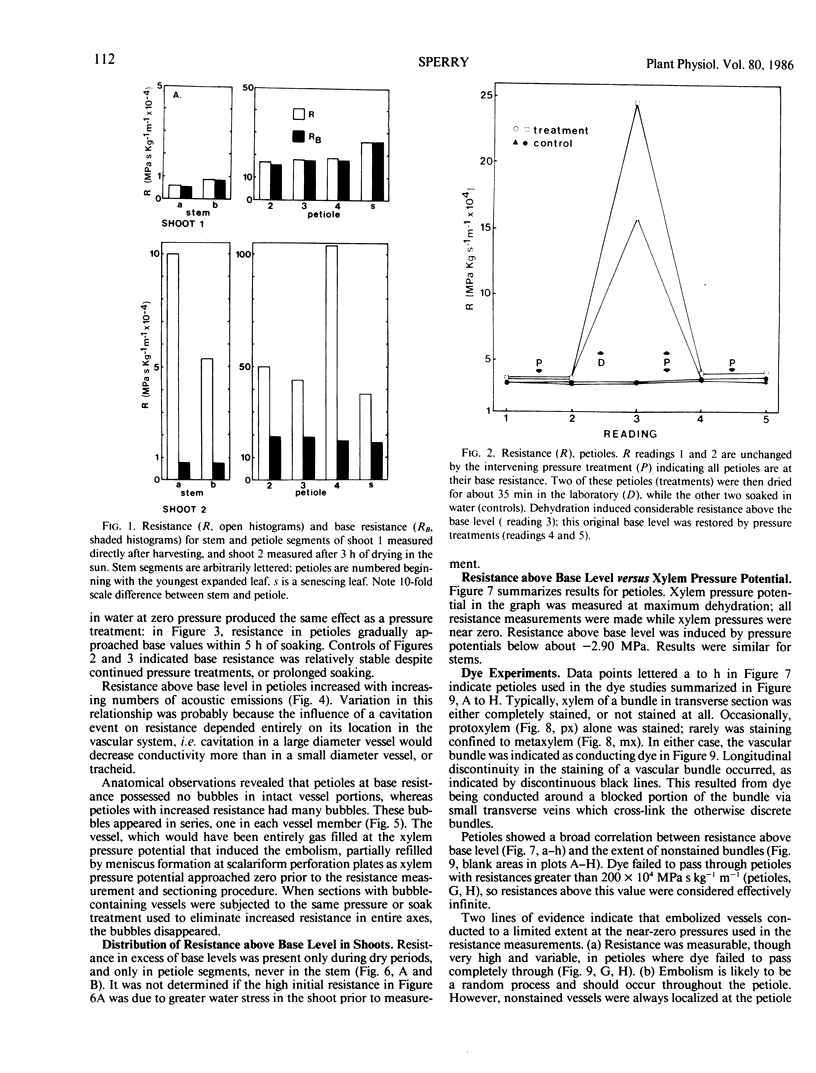
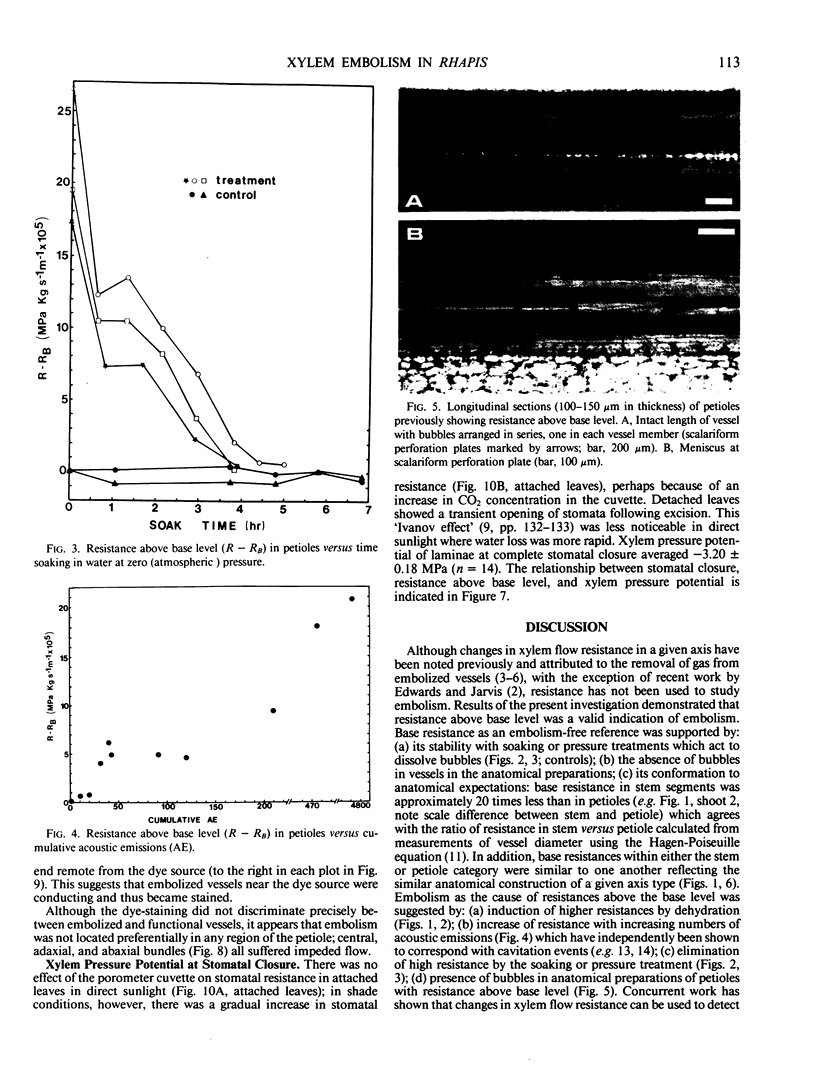
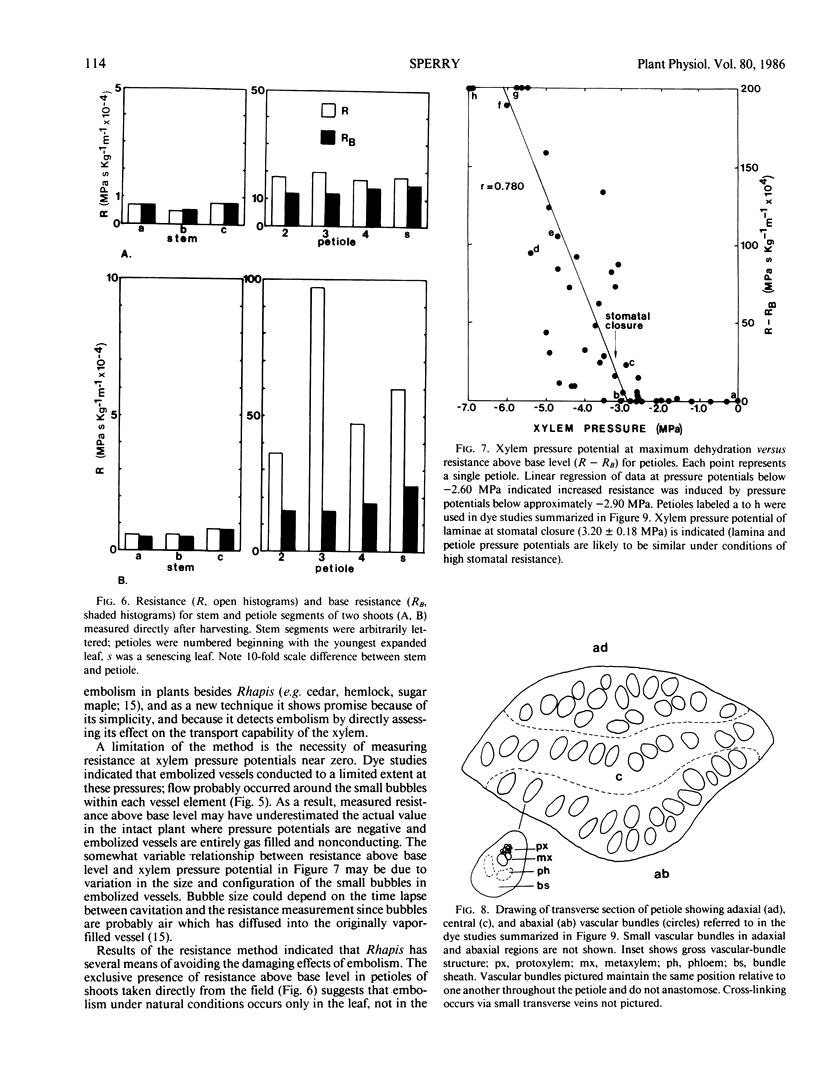
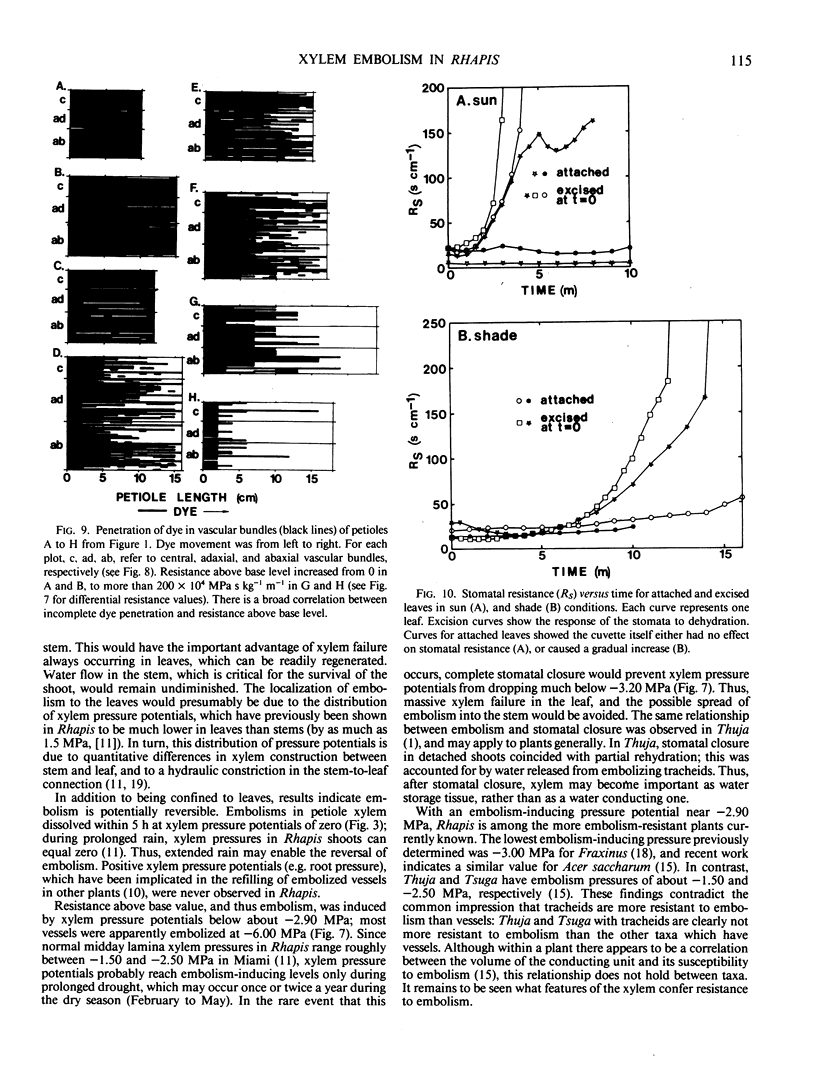
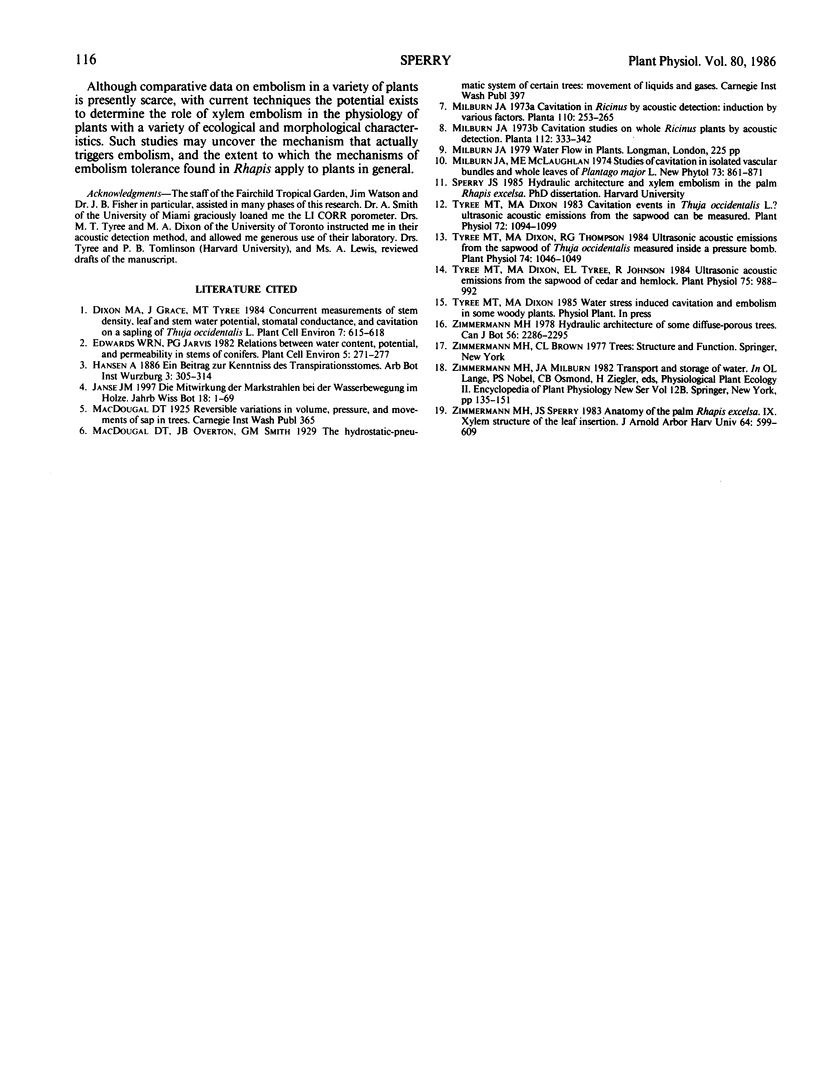
Images in this article
Selected References
These references are in PubMed. This may not be the complete list of references from this article.
- Dixon D. C., Graham G. S., Mayhew R. B., Oesterle L. J., Simms D., Pierson W. P. The validity of transcranial radiography in diagnosing TMJ anterior disk displacement. J Am Dent Assoc. 1984 Apr;108(4):615–618. doi: 10.14219/jada.archive.1984.0399. [DOI] [PubMed] [Google Scholar]
- Tyree M. T., Dixon M. A. Cavitation Events in Thuja occidentalis L.? : Utrasonic Acoustic Emissions from the Sapwood Can Be Measured. Plant Physiol. 1983 Aug;72(4):1094–1099. doi: 10.1104/pp.72.4.1094. [DOI] [PMC free article] [PubMed] [Google Scholar]
- Tyree M. T., Dixon M. A., Thompson R. G. Ultrasonic Acoustic Emissions from the Sapwood of Thuja occidentalis Measured inside a Pressure Bomb. Plant Physiol. 1984 Apr;74(4):1046–1049. doi: 10.1104/pp.74.4.1046. [DOI] [PMC free article] [PubMed] [Google Scholar]
- Tyree M. T., Dixon M. A., Tyree E. L., Johnson R. Ultrasonic acoustic emissions from the sapwood of cedar and hemlock : an examination of three hypotheses regarding cavitations. Plant Physiol. 1984 Aug;75(4):988–992. doi: 10.1104/pp.75.4.988. [DOI] [PMC free article] [PubMed] [Google Scholar]



